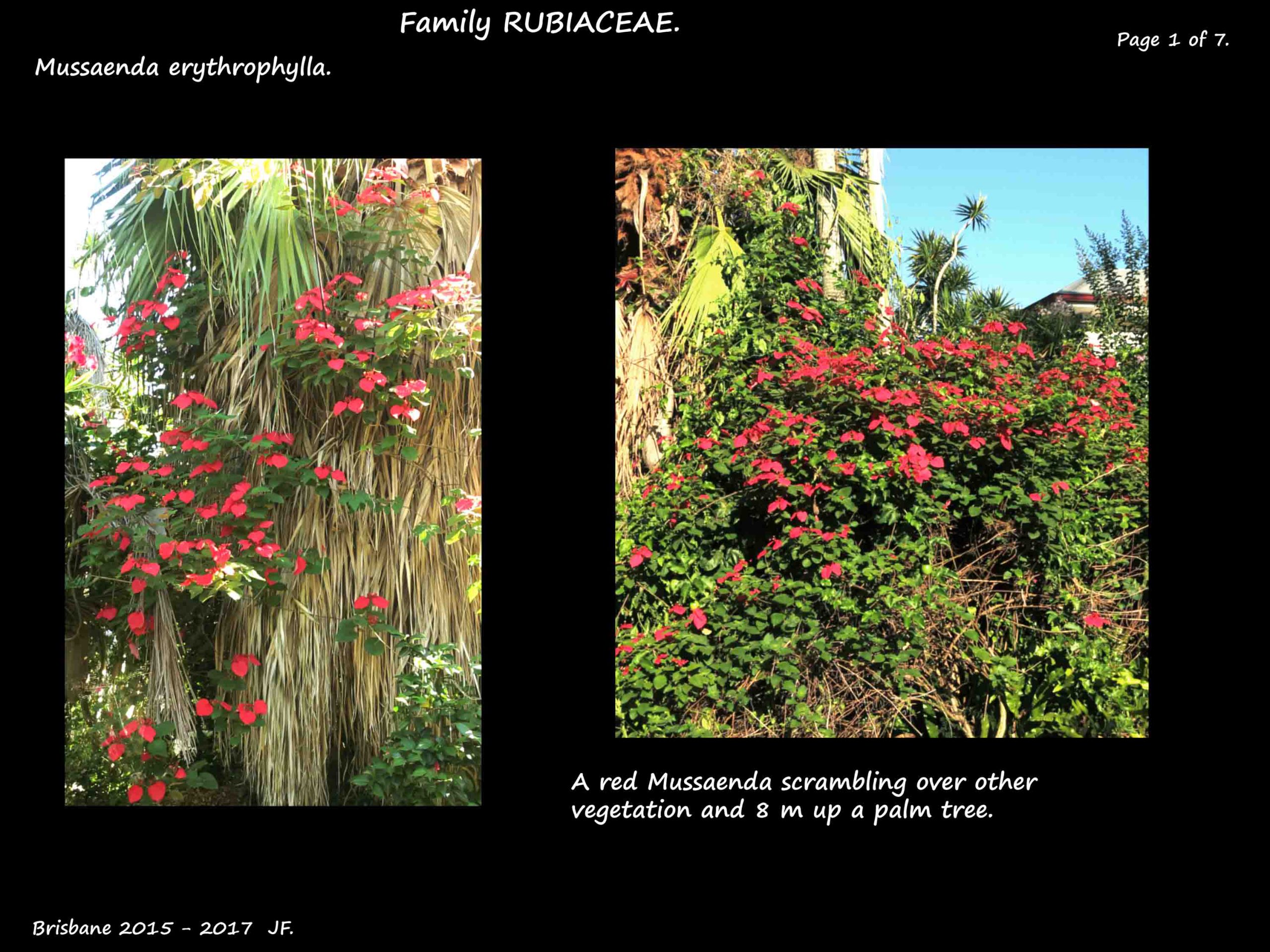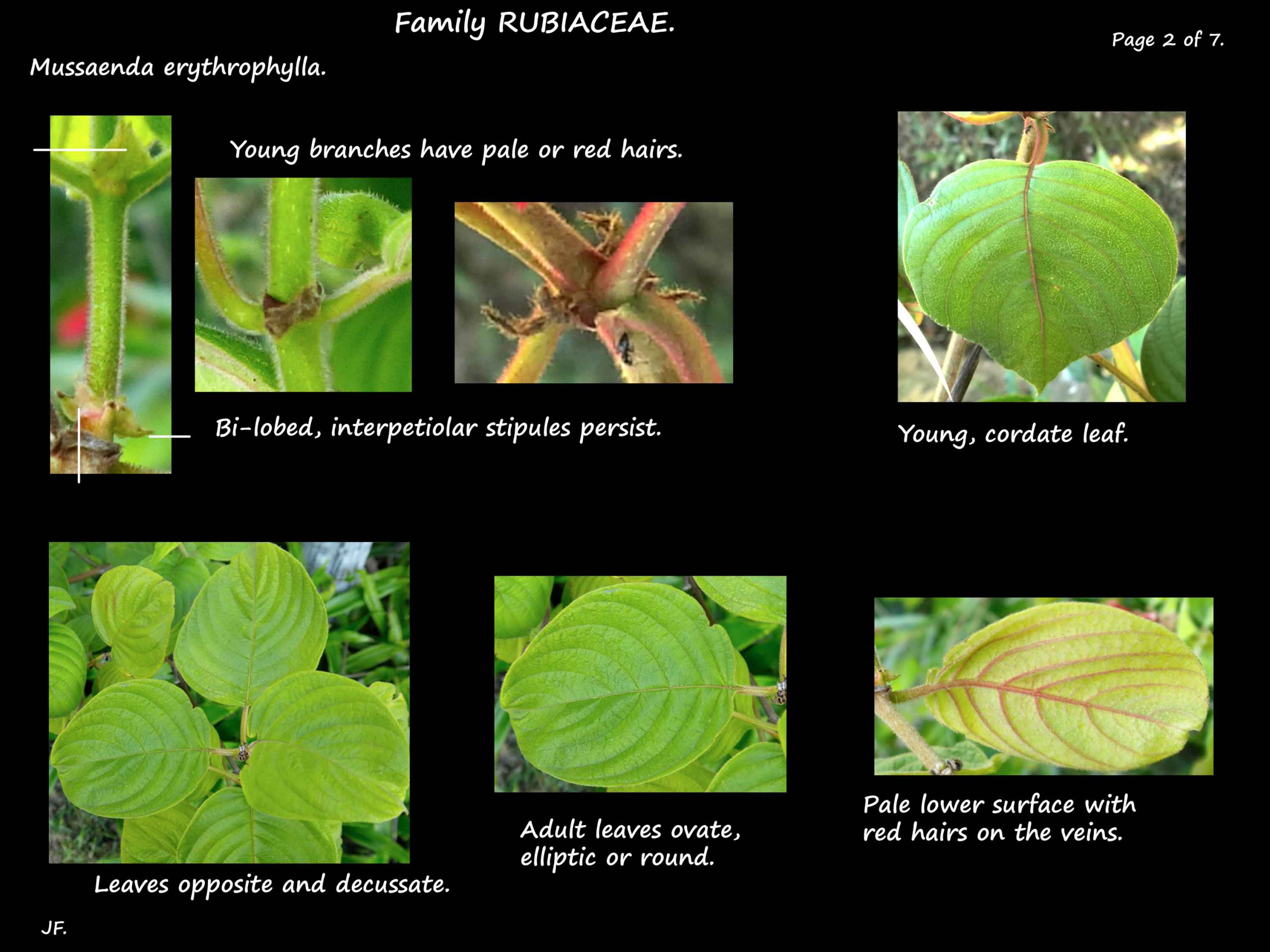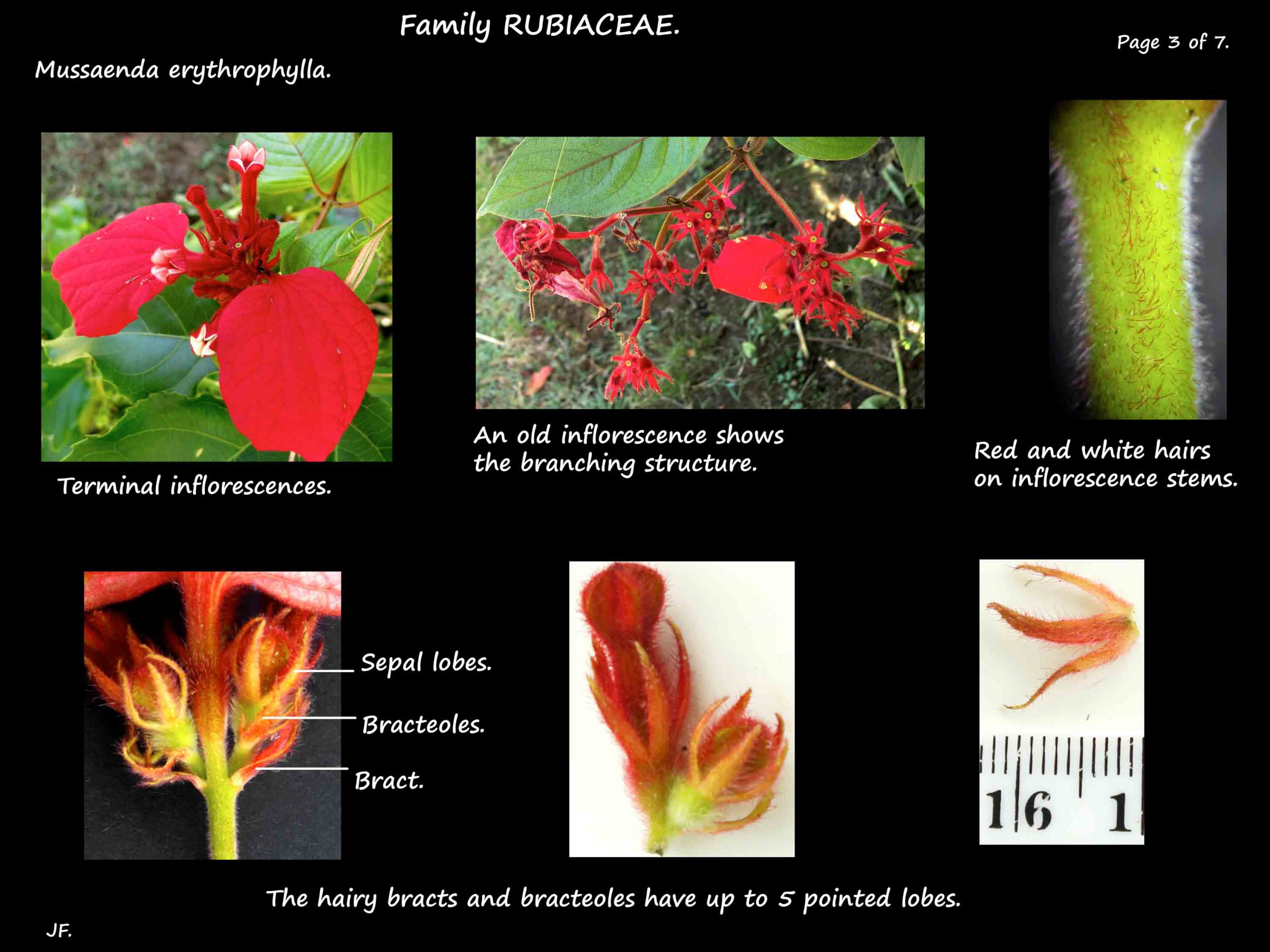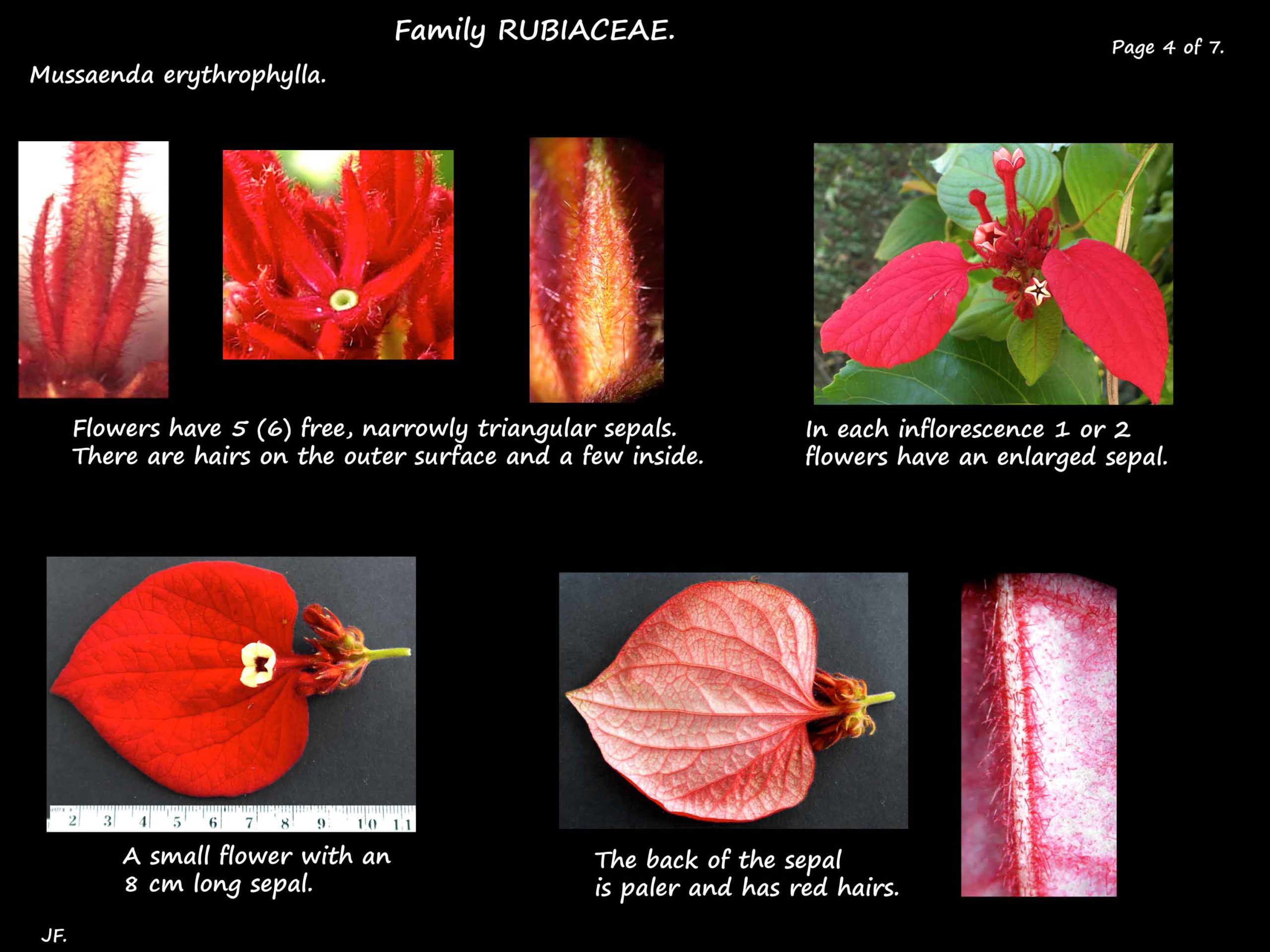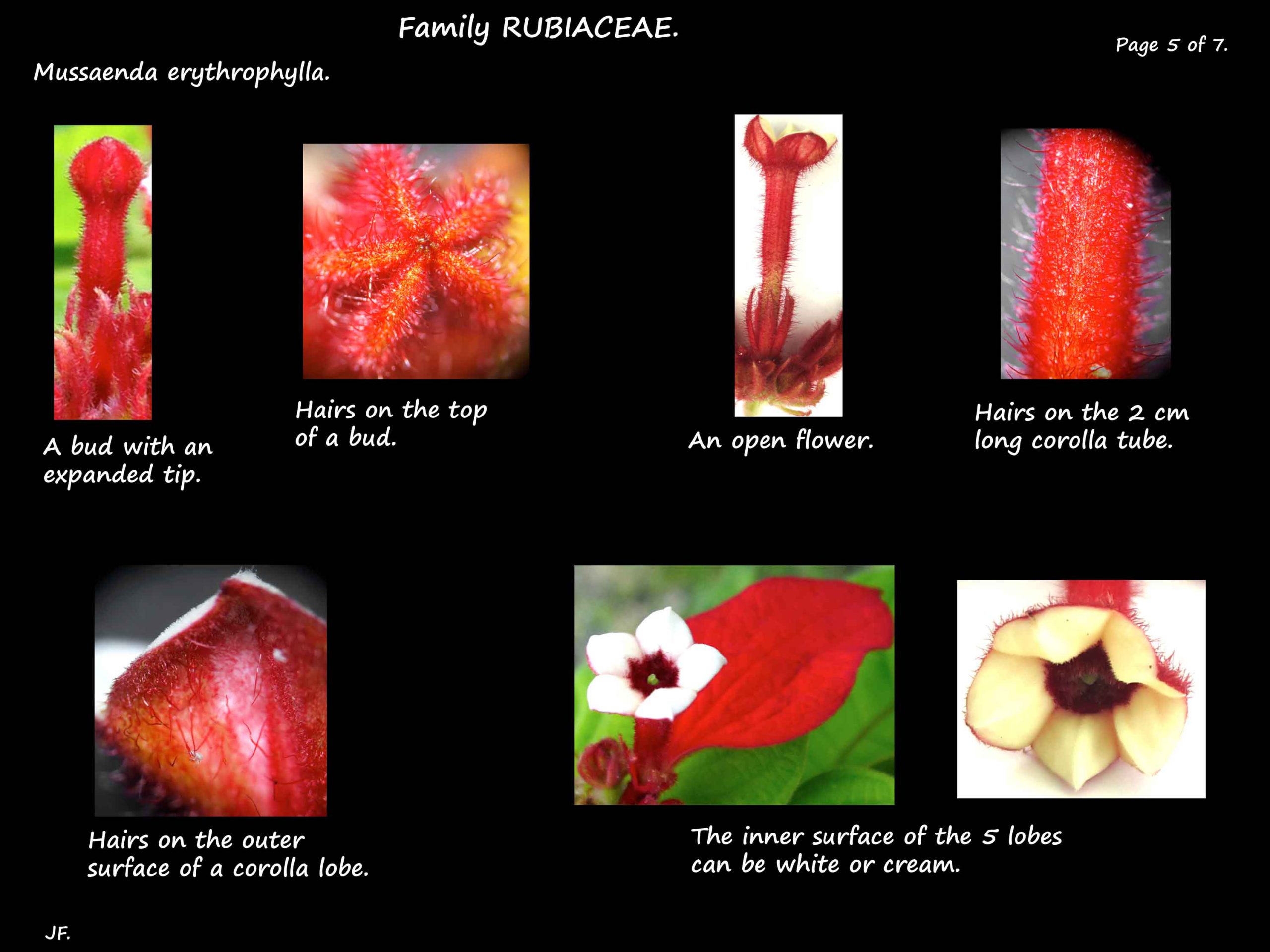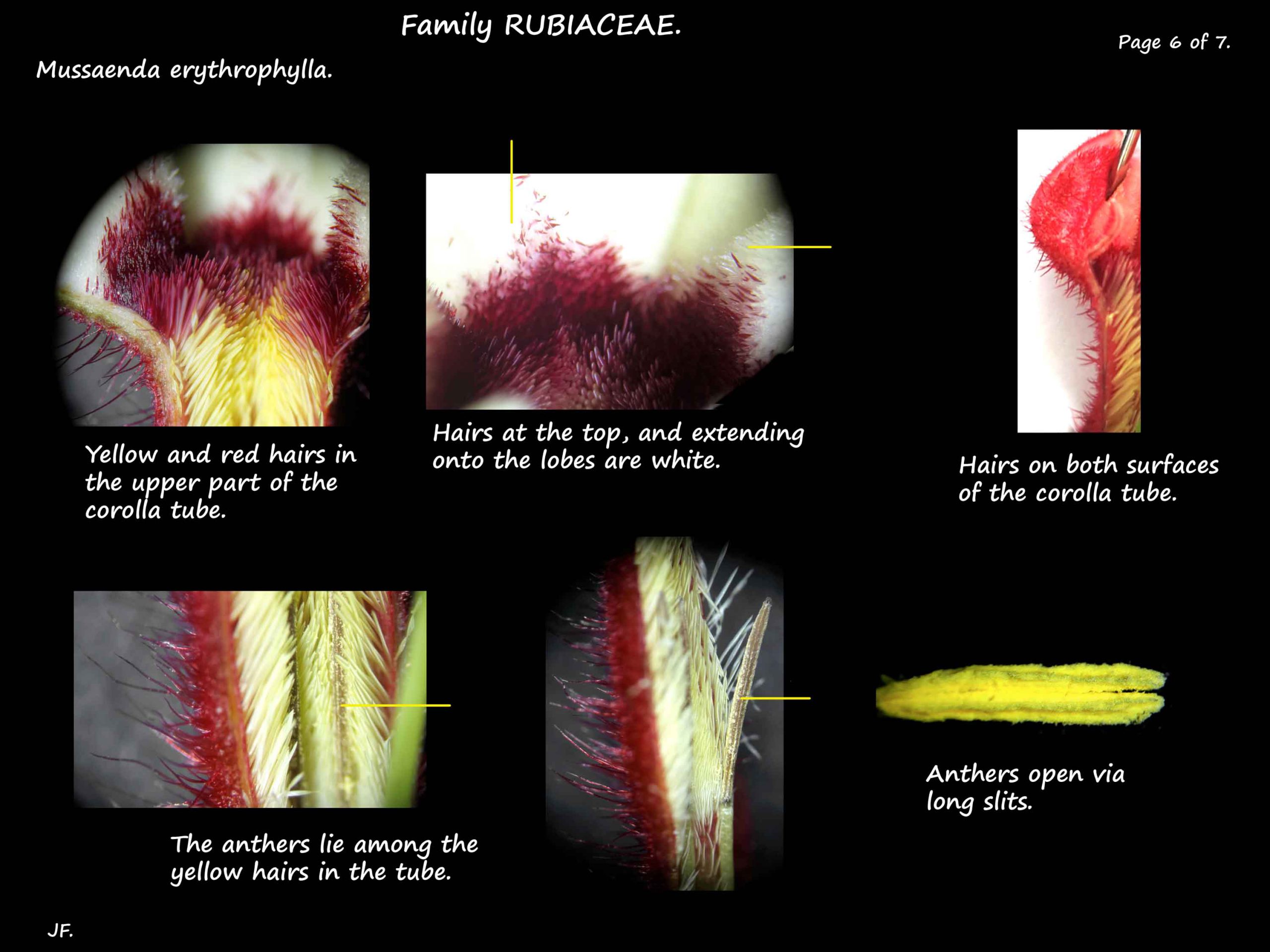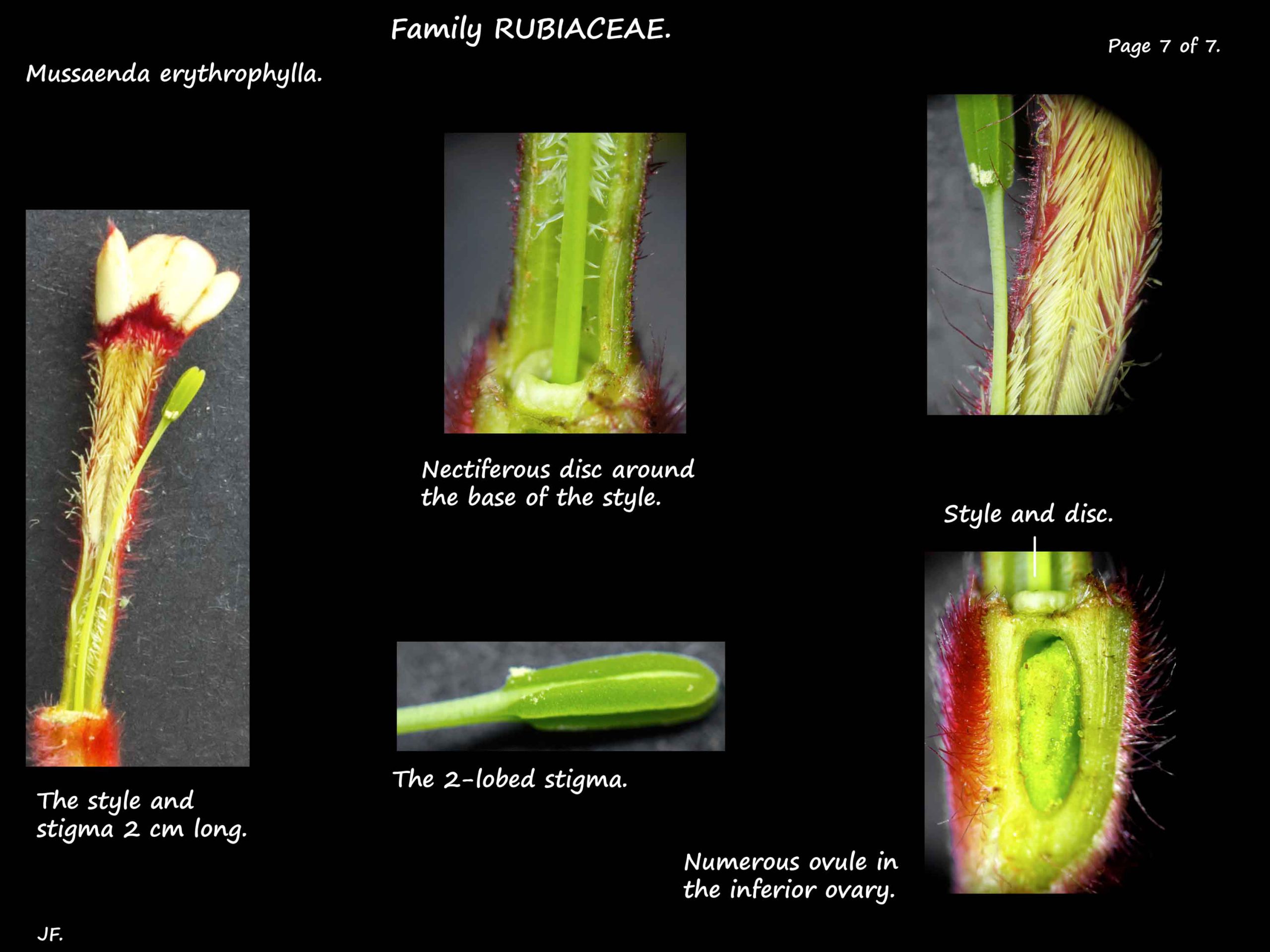Mussaenda erythrophylla.
In Family Rubiaceae, the Red Flag bush is from Africa.
It, and its cultivars, are fairly common as garden plants.
They grow as a shrub a few metres high, sometimes in dense thickets.
They can also scramble over other vegetation reaching up to 8 m high.
The larger woody branches have small white lenticels.
Smaller branches are covered, often densely, with pale or reddish hairs.
The leaves are opposite and decussate and on petioles up to 5 cm long.
Young leaves are heart-shaped (cordate) while older ones are ovate, elliptic or round.
Leaves are up to 18 cm long with hairs on both surfaces especially underneath.
The hairs on the veins underneath may be red.
There are interpetiolar stipules up to 12 mm long that persist.
At least the terminal one third of each stipule is divided into 2 pointed lobes.
There are pale hairs on the outer surface.
The terminal inflorescences are branched clusters with numerous flowers.
The branches are up to 3 cm long and the individual flower stalks up to 1 cm.
There are bracts and bracteoles up to 1.5 cm long.
They have up to 5 pointed lobes and are covered in hairs externally.
Most calyces have 5 (6) free, narrowly triangular sepals around 5 mm long.
They are green to red and have dense hairs outside and some inside.
In each inflorescence at least one flower has a single, enlarged sepal.
These leaf-like sepals, up to 11 cm long, are round to elliptic.
They are bright red or pink and have hairs on both sides.
(In cultivars up to 5 (6) sepals may be enlarged.)
There are 5 petals with their bases fused into a long, narrow tube around 2 cm long.
The 5 rounded lobes are only a few mms long.
Each lobe has a raised central rib that ends in a small point.
The outer surface of the petals is red and there are long, red hairs.
The inner surface of the lobes is white or cream.
The lower one third of the inner surface of the corolla tube has a few pale hairs.
The rest of the tube is densely covered with long, thick, upward pointing hairs.
These are mostly yellow but those at the top and in the throat are a deep red.
There is a thin rim of shorter, white hairs above the red ones.
The 5 anthers, inserted into the corolla tube, are hidden among the yellow hairs.
The pale, annular nectiferous disc lies above the inferior ovary.
The hairless style varies from 1 to 2.5 cm long.
This means the bi-lobed stigma lies in, or above, the mouth of the corolla tube.
The yellowish, ellipsoidal fruit are up to 2.5 cm long.
They are covered in reddish-brown hairs.
J.F.
